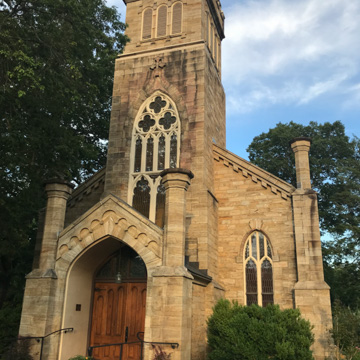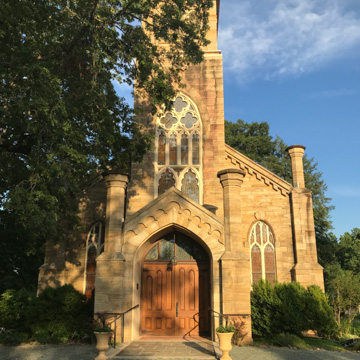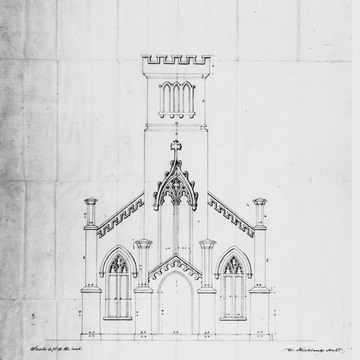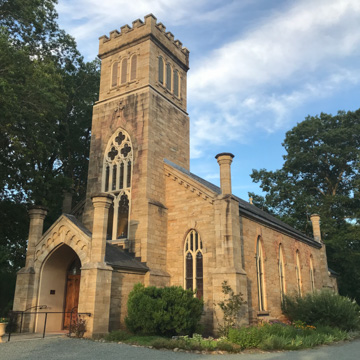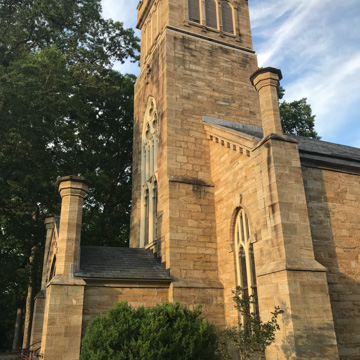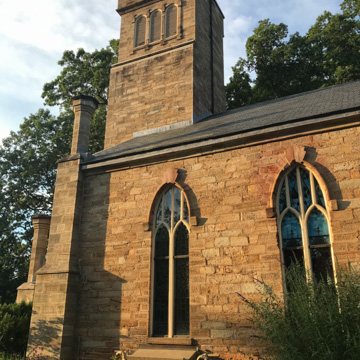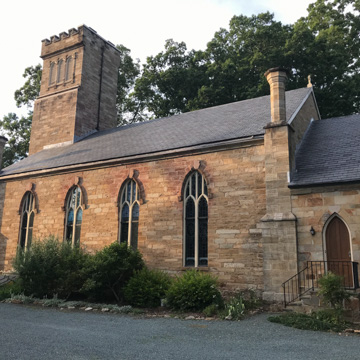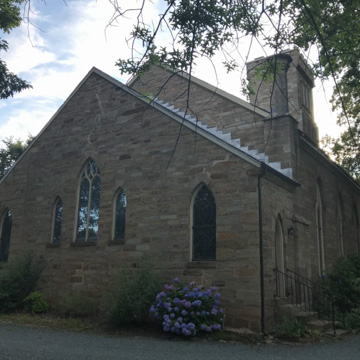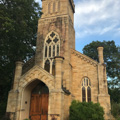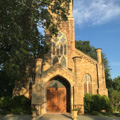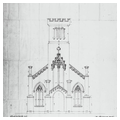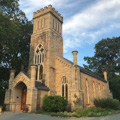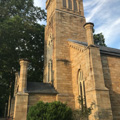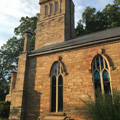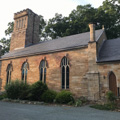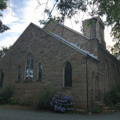Better known for his Greek Revival buildings in Philadelphia and Nashville, Strickland designed only a few Gothic Revival structures, of which this is the best surviving example. The drawings are at the University of Virginia. Construction was funded by Mrs. William Cabell Rives of nearby Castle Hill (PI41), and the cornerstone was laid in 1848, but the church was not completed until 1855. The interior and roof were rebuilt after a fire in 1895. Stylistically, Strickland appears unaware of the Gothic revolution sparked by Pugin and Ruskin in England and looks back to the earlier “Gothick” mode. He may have owed a debt to his fellow Philadelphian Thomas Ustick Walter, and his 1843 design for the Baptist Mariner's Church, unbuilt but intended for Norfolk. Grace Episcopal resembles Walter's design in style and massing and in the large window in the tower. However, Strickland's window is placed higher and is essentially nonfunctional, shedding light only in
You are here
Grace Episcopal Church
1847–1855, William Strickland. 1895, rebuilding. VA 231, Cismont vicinity, Keswick
If SAH Archipedia has been useful to you, please consider supporting it.
SAH Archipedia tells the story of the United States through its buildings, landscapes, and cities. This freely available resource empowers the public with authoritative knowledge that deepens their understanding and appreciation of the built environment. But the Society of Architectural Historians, which created SAH Archipedia with University of Virginia Press, needs your support to maintain the high-caliber research, writing, photography, cartography, editing, design, and programming that make SAH Archipedia a trusted online resource available to all who value the history of place, heritage tourism, and learning.














